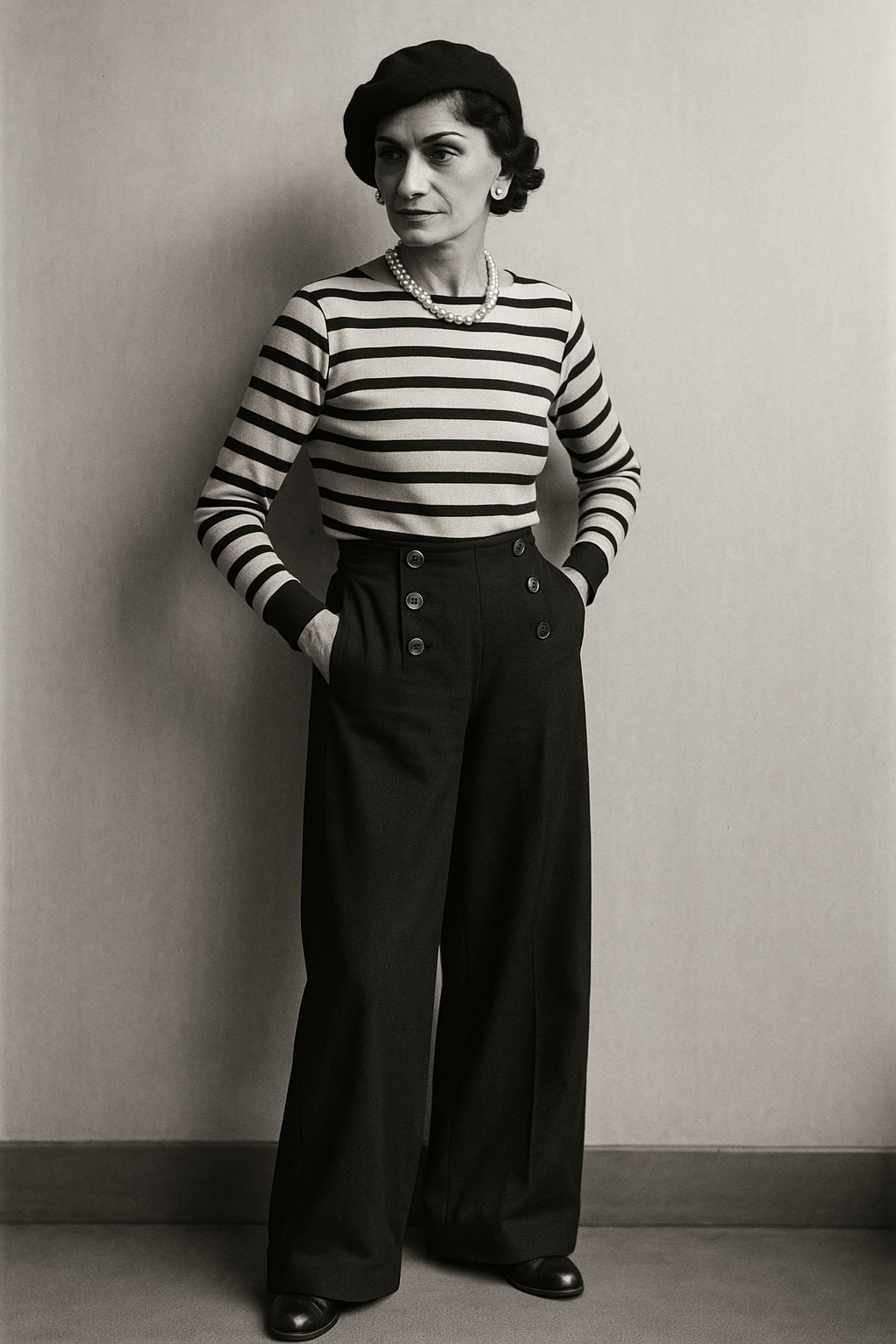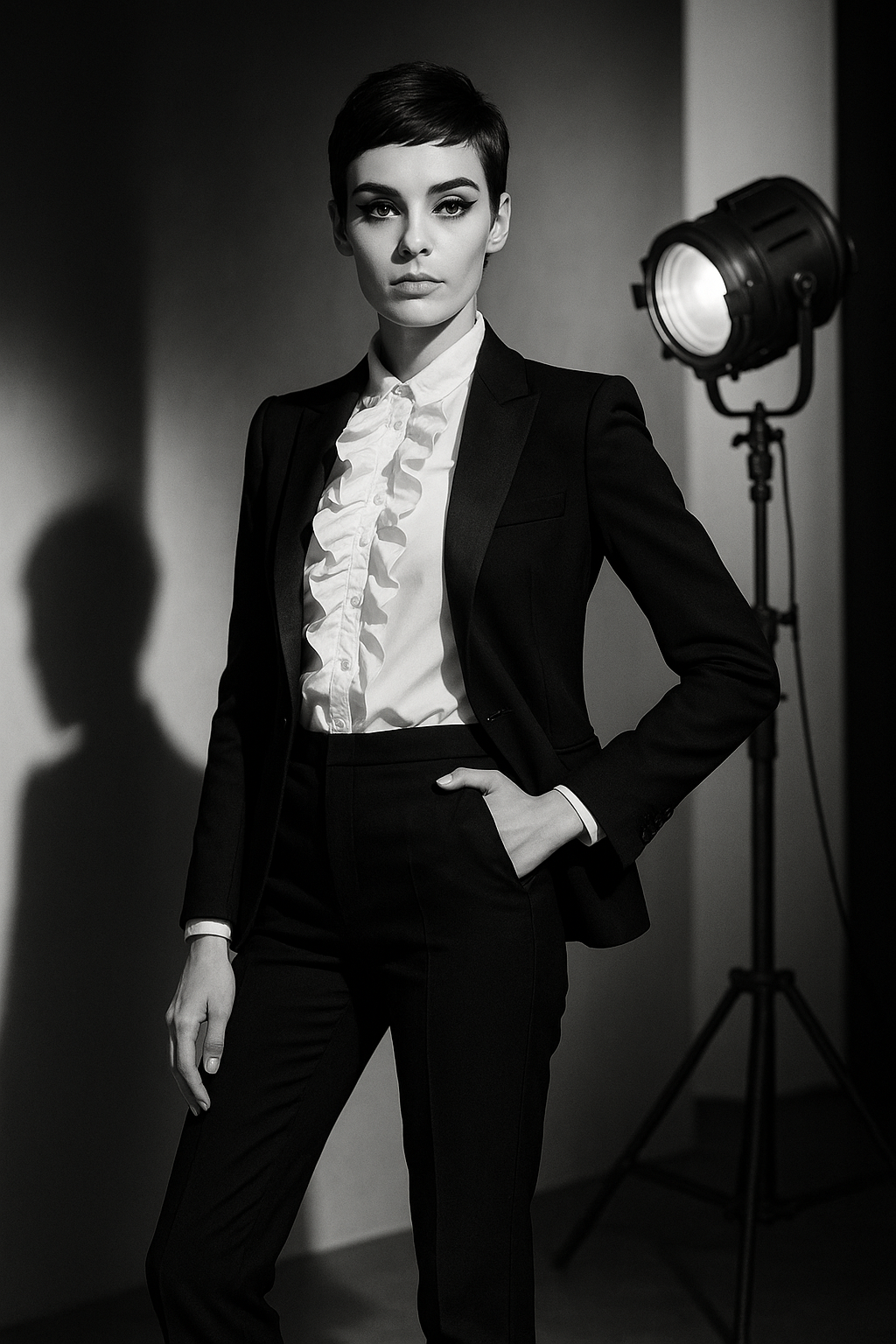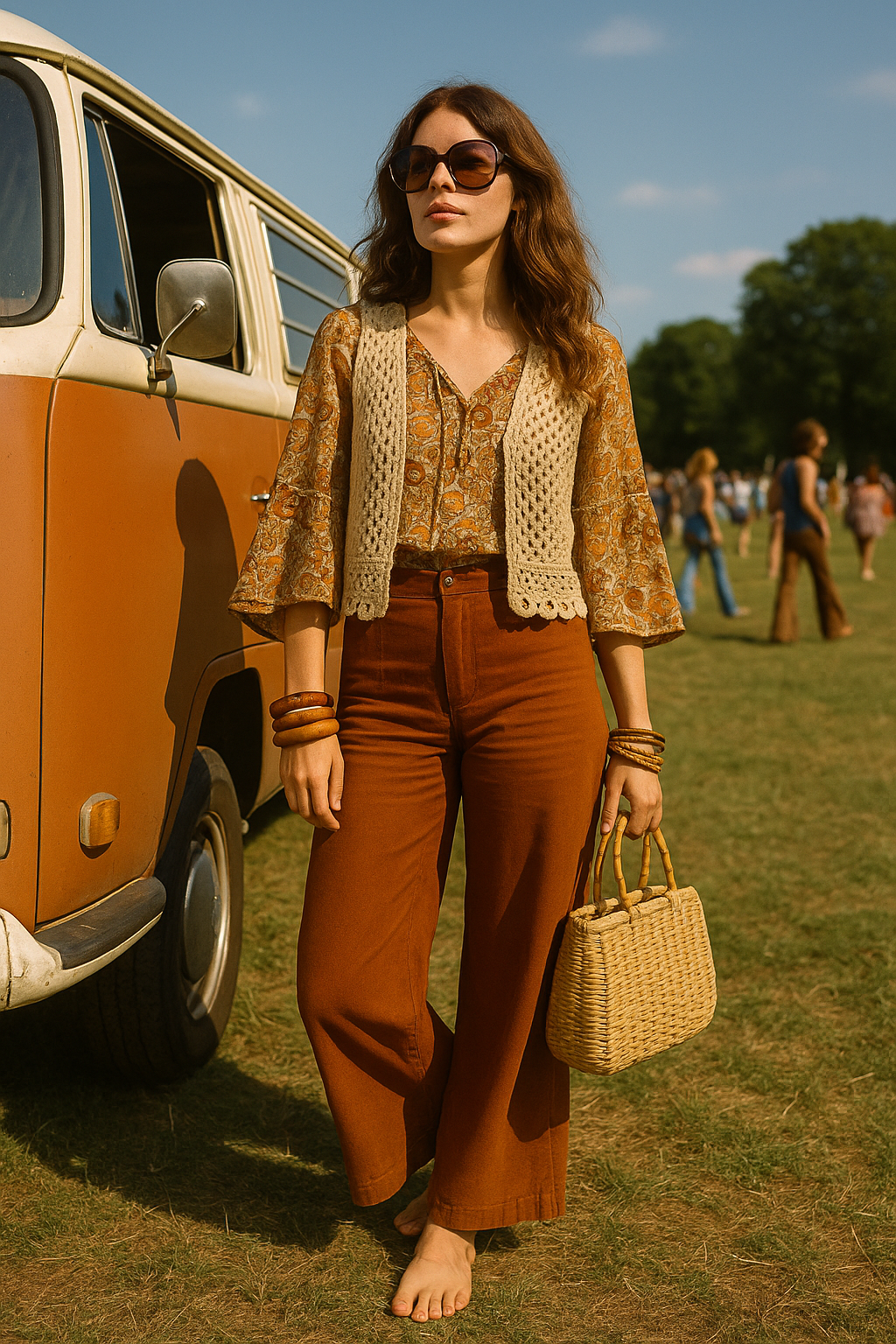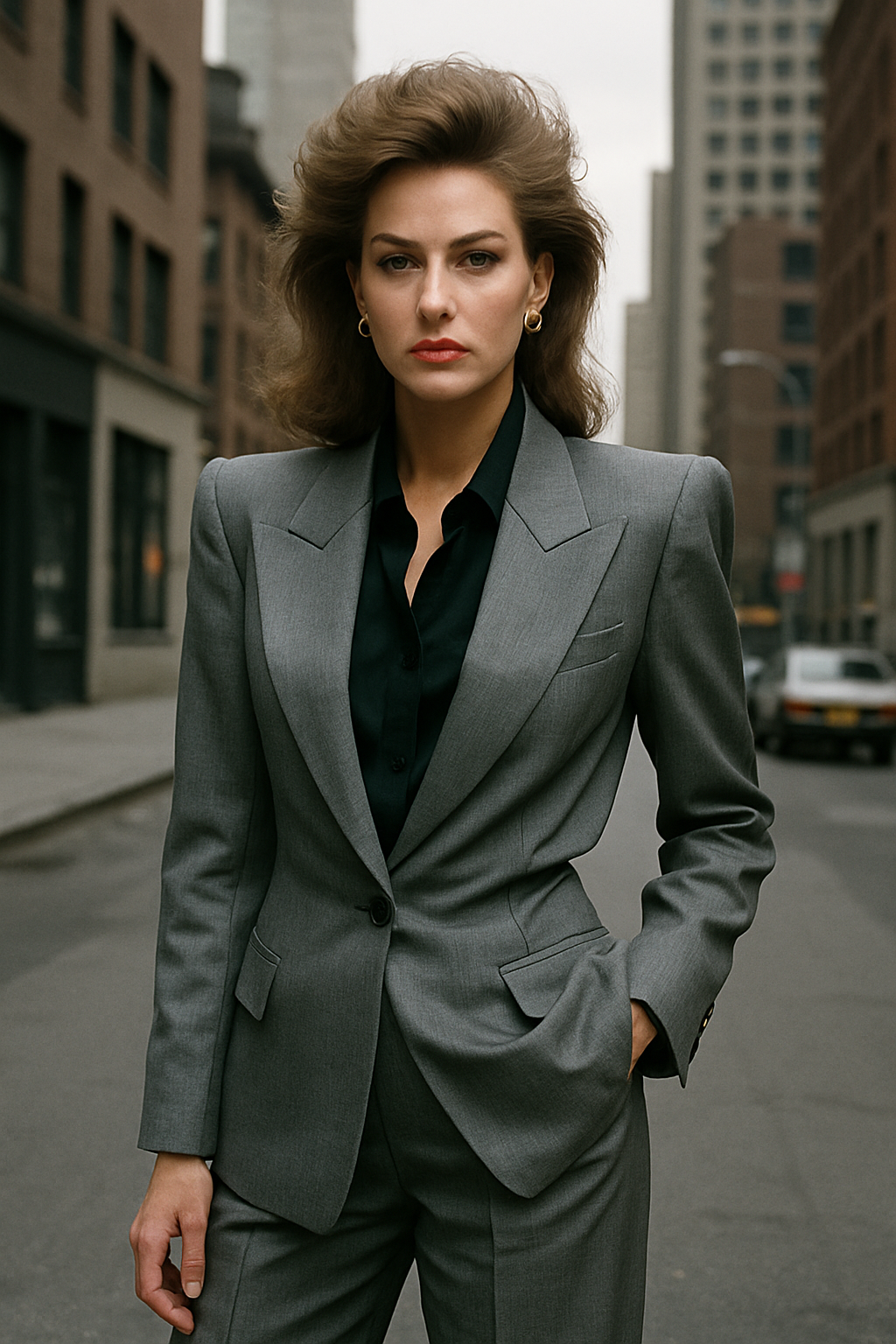A Journey Through Fashion History: The Story of Women’s Trousers
For centuries, trousers were a male-only garment, a symbol of authority and practicality. Women were expected to wear skirts and dresses that reflected societal expectations of modesty and femininity. But fashion, like society, is ever-evolving — and the story of women’s trousers is one of rebellion, liberation, and style.
Coco Chanel: The Woman Who Changed Everything
No discussion of women’s trousers is complete without Gabrielle “Coco” Chanel — the revolutionary designer who defied convention at every turn. Born in 1883 in Saumur, France, Chanel’s early life was marked by hardship. After her mother’s death, she spent her formative years in an orphanage, where she learned to sew.
This photo is an aesthetic representation.
In the early 1900s, she worked as a cabaret singer before opening a small millinery shop at 21 Rue Cambon in Paris in 1910. Initially, she made hats for fashionable Parisians, but her keen eye for design and her desire to liberate women from restrictive clothing soon set her on a path to transform fashion itself.
“Fashion is not something that exists in dresses only. Fashion is in the sky, in the street. Fashion has to do with ideas, the way we live, what is happening.” — Coco Chanel
This photo is an aesthetic representation.
Chanel began introducing practical, comfortable clothing, borrowing fabrics and silhouettes from menswear. She famously wore wide-legged sailor pants during seaside vacations — a daring choice that challenged traditional ideas of femininity. Recognizing the practicality and modernity of trousers, she designed them for women at a time when it was almost scandalous to do so.
Coco Chanel’s Maison
Her fashion house — Maison Chanel — officially launched in 1913 in Deauville, where she introduced casual jersey sportswear. By 1918, her Paris atelier at Rue Cambon became a hub of innovation. Chanel’s relaxed elegance and commitment to simplicity redefined women’s wardrobes, making style synonymous with comfort and modernity.
This photo is an aesthetic representation.
The Early Evolution: From Rebellion to Acceptance
1930s–1940s: Hollywood Influence
After Coco Chanel’s groundbreaking initial designs, a host of other trailblazers followed in her footsteps. In the vibrant fashion landscape of the 1930s and 40s, Hollywood stars like Katharine Hepburn and Marlene Dietrich boldly embraced tailored trousers, often pairing them elegantly with crisp white shirts and fitted blazers. Dietrich, in particular, took a stand and challenged prevailing gender norms with her striking androgynous style — frequently donning suits and tuxedos in a glamorous yet defiant manner that captivated audiences and inspired many.
World War II further accelerated the widespread normalization of trousers for women. As women increasingly took on various jobs in factories and offices, the demand for practicality in clothing necessitated items that allowed for greater freedom of movement. Consequently, overalls, slacks, and utility pants emerged as essential garments, effectively blurring the lines between traditional men’s and women’s wardrobes and reshaping societal norms regarding women's fashion.
1950s: Feminine Touches
While skirts and dresses reigned supreme in the 1950s, trousers certainly didn’t completely disappear from the fashion scene. Slim, chic capri pants (think Audrey Hepburn in her iconic film Sabrina) emerged as a fashionable choice for casual wear, usually paired with elegant ballet flats and crisp cotton blouses. These early style steps not only showcased the versatility of trousers but also paved the way for them to be accepted as both stylish and appropriate options for women’s daily lives, blending comfort with sophistication in an effortless manner.
1960s: Mod Revolution
The 1960s brought a seismic shift. Designers like André Courrèges and Yves Saint Laurent revolutionized trousers by introducing futuristic, mod-inspired pantsuits. Women in the workplace, inspired by the feminist movement, embraced tailored trousers as a symbol of empowerment.
“Fashions fade, style is eternal.” — Yves Saint Laurent
The iconic Le Smoking tuxedo by Saint Laurent in 1966 cemented trousers as an elegant evening choice for women, blending masculine tailoring with feminine sophistication.
1970s: Liberation and Bohemian Vibes
The 1970s saw trousers evolve in every direction. High-waisted, wide-legged pants, often in earthy tones or psychedelic prints, became staples of the bohemian aesthetic. At the same time, denim jeans — once strictly workwear — became a fashion statement, worn by everyone from rock stars to everyday women.
The women’s liberation movement embraced trousers as a symbol of equality, and designers responded with playful, experimental styles that celebrated individuality.
1980s: Power Dressing and Corporate Chic
In the 1980s, trousers became a key element of power dressing. Women entered the boardroom in strong-shouldered suits, projecting confidence and authority. Designers like Giorgio Armani led the charge with sleek, tailored trousers that exuded sophistication.
Trousers were no longer just a statement of rebellion; they were essential to a professional woman’s wardrobe.
1990s–2000s: Minimalism, Cargo Pants, and Beyond
The 90s ushered in an era of minimalism — think simple, straight-legged trousers, slip dresses, and neutral colors. But streetwear also emerged, bringing cargo pants and oversized jeans into the mainstream.
The 2000s blended influences: from boho-chic wide-leg trousers to the rise of skinny jeans. Trousers became a canvas for self-expression, whether styled with a blazer for the office or a crop top for a night out.
Today: Infinite Possibilities
Today, trousers for women come in countless styles — from tailored office wear to relaxed joggers and statement wide-legs. High-waisted, low-rise, pleated, cropped — every cut finds its place in a modern wardrobe.
Thanks to Coco Chanel’s rebellious spirit, women’s trousers are now a symbol of choice and empowerment, reflecting every facet of modern life.
Coco Chanel’s Enduring Influence
Chanel’s legacy extends beyond her name on a label. Her fearless embrace of trousers for women changed fashion forever. She taught us that comfort and elegance can coexist, and that style should reflect our lives and our freedoms.
“Luxury must be comfortable, otherwise it is not luxury.” — Coco Chanel
Maison Chanel continues to honor her vision, evolving with the times while always staying true to her belief that fashion should liberate rather than confine.
Thanks for Reading!
💬 Which decade’s style is your favorite? Let me know in the comments!
Stay tuned for more style inspiration!










